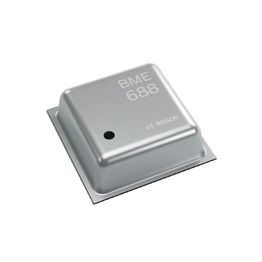sensor
A sensor is a device that detects and responds to some type of input from the external environment. The specific input could be light, heat, motion, moisture, pressure, or any other form of physical or chemical stimulus. The function of a sensor is to convert the detected input into a signal that can be interpreted by other electronic devices or computers.
Functions:
1. Detection: Sensors are used to detect changes in the environment, such as temperature, pressure, or the presence of a particular substance.
2. Measurement: They can measure physical quantities, providing precise data for or control systems.
3. Control: In automated systems, sensors are often used to control processes by triggering actions when certain conditions are met.
4. Data Acquisition: Sensors collect data that can be used for analysis, decision-making, or feedback in a system.
Applications:
1. Industrial Automation: Sensors are crucial in manufacturing for process control, quality assurance, and safety.
2. Medical Devices: They are used in diagnostic equipment, patient systems, and assistive technologies.
3. Consumer Electronics: Sensors are found in smartphones, wearables, and home automation systems for features like touch, motion, and environmental sensing.
4. Environmental : Sensors are used to monitor air and water quality, weather conditions, and natural disasters.
5. Automotive: They are essential for safety features like airbag deployment, anti-lock braking systems, and engine management.
Selection Criteria:
1. Sensitivity: The ability of the sensor to detect small changes in the input signal.
2. Resolution: The smallest change in the input that the sensor can detect and accurately measure.
3. Accuracy: How closely the sensor's output matches the true value of the input.
4. Range: The span of input values that the sensor can measure.
5. Response Time: The speed at which the sensor can detect and respond to changes in the input.
6. Environmental Stability: The sensor's ability to maintain performance under varying environmental conditions.
7. Durability: The sensor's resistance to wear and tear and its expected lifespan.
8. Cost: The balance between the sensor's performance and its cost, considering the application's budget constraints.
When selecting a sensor, it is important to consider these criteria in relation to the specific requirements of the application to ensure that the sensor meets the necessary performance standards.
Please refer to the product rule book for details.
Functions:
1. Detection: Sensors are used to detect changes in the environment, such as temperature, pressure, or the presence of a particular substance.
2. Measurement: They can measure physical quantities, providing precise data for or control systems.
3. Control: In automated systems, sensors are often used to control processes by triggering actions when certain conditions are met.
4. Data Acquisition: Sensors collect data that can be used for analysis, decision-making, or feedback in a system.
Applications:
1. Industrial Automation: Sensors are crucial in manufacturing for process control, quality assurance, and safety.
2. Medical Devices: They are used in diagnostic equipment, patient systems, and assistive technologies.
3. Consumer Electronics: Sensors are found in smartphones, wearables, and home automation systems for features like touch, motion, and environmental sensing.
4. Environmental : Sensors are used to monitor air and water quality, weather conditions, and natural disasters.
5. Automotive: They are essential for safety features like airbag deployment, anti-lock braking systems, and engine management.
Selection Criteria:
1. Sensitivity: The ability of the sensor to detect small changes in the input signal.
2. Resolution: The smallest change in the input that the sensor can detect and accurately measure.
3. Accuracy: How closely the sensor's output matches the true value of the input.
4. Range: The span of input values that the sensor can measure.
5. Response Time: The speed at which the sensor can detect and respond to changes in the input.
6. Environmental Stability: The sensor's ability to maintain performance under varying environmental conditions.
7. Durability: The sensor's resistance to wear and tear and its expected lifespan.
8. Cost: The balance between the sensor's performance and its cost, considering the application's budget constraints.
When selecting a sensor, it is important to consider these criteria in relation to the specific requirements of the application to ensure that the sensor meets the necessary performance standards.
Please refer to the product rule book for details.
Categories
Datasheets
Article

What Is a Potential Transformer (PT)?
Table of Contents + 1. Basic Definition & Background 1.1. What Is a Potential Transformer? 1.2. PT vs Ordinary Transformer vs Instrument Transformer 1.3. Applications of Potential Transformers / What Are Potential Transformers Used For?2. Operation Principle 2.1. Working Principle of a PT / VT 2.2. Voltage Ratio & Turn Ratio Relationship 2.3....
Learn More >
ICkey Named Intel IoT Solution Aggregator, Marking Strategic Milestone in Partnership
ICkey, a leading distributor of electronic components and provider of digital supply chain solutions, has entered into a strategic partnership with global semiconductor giant Intel, becoming an official Intel IoT Solution Aggregator. To commemorate this milestone, the two companies held a signing ceremony under the theme “Smart Connectivity, Powering the Future.” During the ceremony, Bi Fenglei, Senior ...
Learn More >

ICkey Successfully Lists on Shenzhen Stock Exchange ChiNext Board, Empowering Innovation in the Electronics Industry
On September 30, 2025, ICkey (Shanghai) Internet & Technology Co., Ltd. (ICkey) announced its successful listing on the ChiNext Board of the Shenzhen Stock Exchange under the stock code 301563. As a leading vertical B2B supply chain platform in the electronic components sector, ICkey supports the R&D, production, and procurement needs of the electronics manufacturing industry - specifically targeting small and medium-b...
Learn More >





























